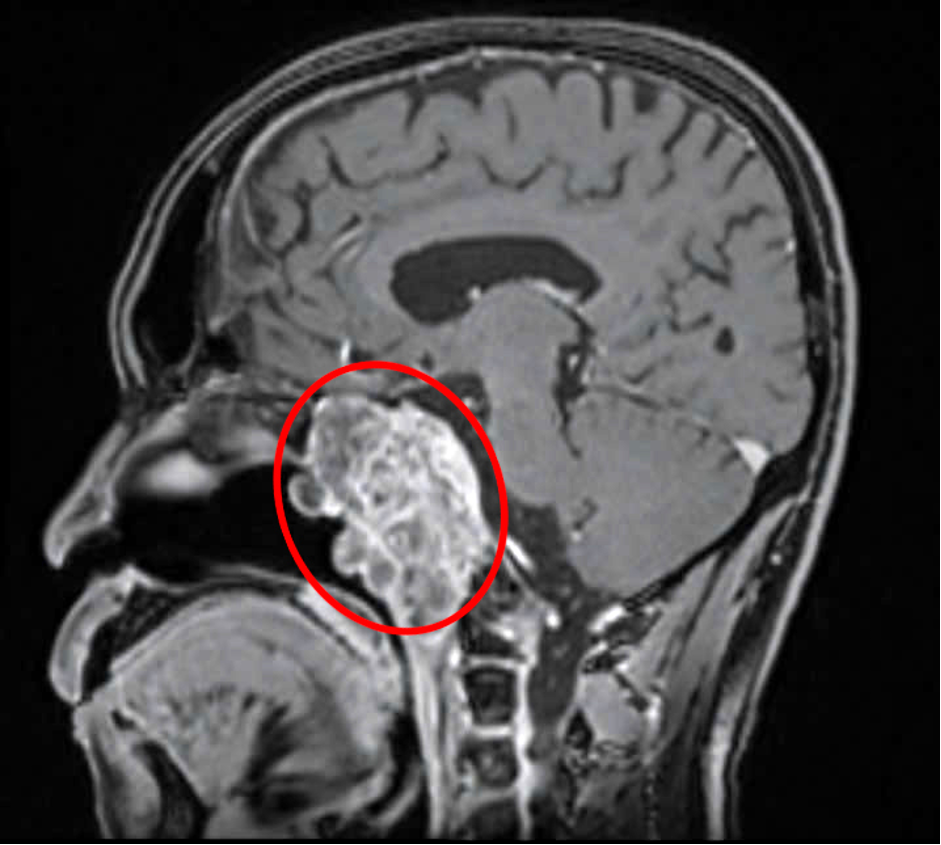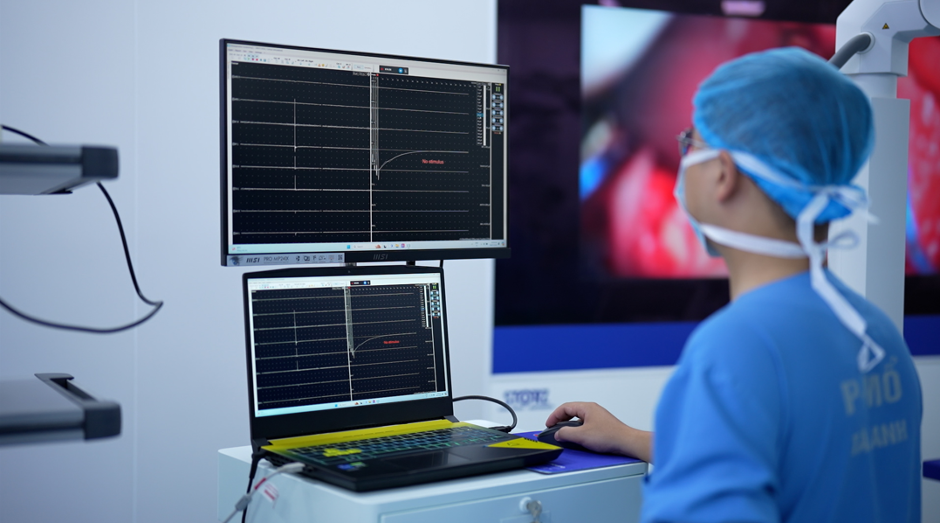Dr. Nguyen Duc Anh, head of the Spine Neurosurgery Department at Tam Anh General Hospital Hanoi, said chordoma is a malignant condition, affecting approximately 1 in 1,000,000 people. It originates from notochord tissue, a structure present during fetal development that helps shape the spine and typically disappears before birth. However, in some individuals, residual notochord tissue can develop into a chordoma.
Hanh's tumor grew along the midline, extending backward and compressing the brainstem, causing headaches and dizziness. The tumor eroded bone and spread to both sides, invading part of the cavernous sinus and encasing major blood vessels. Hanh experienced double vision and limited eye movement due to the tumor's pressure on cranial nerves 3, 4, and 6.
 |
The patient's chordoma had deeply invaded the base of the skull. Photo: Tam Anh General Hospital |
According to Dr. Anh, chordomas are often located near critical structures such as the spinal cord, nerves, and major blood vessels, making complete removal challenging and potentially risky. After consultation, the doctors opted for maximal surgical resection followed by adjuvant radiotherapy. The main goal was to completely remove the tumor along with the surrounding healthy tissue to reduce the risk of recurrence.
The Spine Neurosurgery team used a high-magnification, optimally illuminated microsurgical system for the operation. Intraoperative neuromonitoring (IONM) continuously monitored motor, sensory, and cranial nerve functions, providing early warnings of potential damage. The microsurgical system helped the surgeon separate the tumor from blood vessels and nerves with high precision, minimizing the risk of damage and preserving the patient's remaining functions.
 |
The team utilized intraoperative neurophysiological monitoring during the surgery. Photo: Hospital provided |
After surgery, the patient received adjuvant radiotherapy to eliminate any residual tumor cells and reduce the risk of recurrence. He is also undergoing regular checkups to monitor his health. Currently, Hanh's health is stable.
Dr. Anh noted that chordomas develop silently but are invasive, destroying surrounding tissue structures and are often detected in late stages. Symptoms include persistent back pain, numbness in the extremities, muscle weakness, persistent headaches, blurred vision, eye swelling, and drooping eyelids. These are easily mistaken for common ailments, leading many to disregard them. The disease is more common in men than women, mainly between the ages of 40 and 70.
If you experience any of the aforementioned unusual symptoms with no clear cause, you should consult a neurosurgeon or ophthalmologist for prompt examination and diagnosis.
Linh Dang
* The patient's name has been changed
| Readers can submit questions about neurological conditions here for doctors to answer. |












